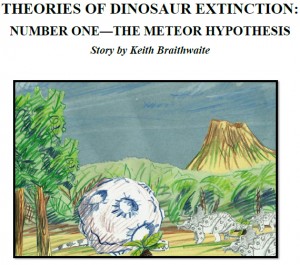Asteroids in the news this week
An asteroid will pass between Earth and Moon just a day before Asteroid Day! Good timing, but the scary thing is that it was only discovered last week.
Remember Apophis? This asteroid made headlines when it was thought it would impact Earth in 2029. It won’t, but it might take out a few communication satellites. It will likely be visible to the naked eye.
From the Planetary Society:
The U.S. government recently completed an asteroid impact preparedness exercise. NASA’s Planetary Defense Coordination Office, in partnership with the Federal Emergency Management Agency and the U.S. Department of State Office of Space Affairs, recently went through a hypothetical scenario in which an asteroid was found on a collision course with Earth. This was the fifth such exercise, and the first to incorporate the results of NASA’s DART mission. NASA published a summary of takeaways from the exercise.
Two large asteroids will safely pass Earth this week. Although both asteroids’ trajectories are known and neither poses any risk to our planet, one of them was only discovered a week ago, highlighting the need to continue improving our ability to detect potentially hazardous objects. That recently discovered asteroid, 2024 MK, will be observable around its closest approach on June 29 using a small telescope or binoculars.
Apophis won’t hit Earth, but might wipe out a few satellites!Apophis is a near-Earth asteroid, meaning its orbit around the Sun brings it within 1.3 times the distance between the Sun and Earth. Its full name is Apophis 99942. After Apophis was discovered in 2004, the asteroid was given a 2.7% chance of hitting Earth in 2029, causing a great deal of media attention. It also for a time had a small chance of hitting Earth in 2036. Additional observations have shown it will not hit Earth in 2029 or in 2036.
Nevertheless, in 2029 Apophis will come closer to Earth than our geostationary communications satellites, likely sparking a great deal of public interest. READ MORE
FROM THE CBC:
Large asteroid to pass between Earth and the moon on Saturday
The asteroid was only discovered earlier this month
Earth is surrounded by rocky bodies and bits of debris from when the solar system formed roughly 4.5 billion years ago. On Saturday, one of those leftover rocks will whiz past Earth.
The asteroid is called 2024 MK and, at its closest, it will pass roughly 290,000 km from Earth. While we have plenty of small asteroids that are scattered within Earth’s orbit, this one is sizeable, ranging anywhere from 120 metres to 260 metres in diameter.
But there’s another interesting — and somewhat disquieting — fact about this large asteroid.
“Maybe the big take-home point on this one is it’s a pretty big object and it was only found 10 or 12 days before closest approach,” said Peter Brown, Canada Research Chair in meteor astronomy and a professor at Western University in London, Ont. “The last time we had an object this big or bigger pass this close to Earth was … in 2001.”
“So unlike most asteroid stories, this actually is noteworthy in the sense of … this is pretty big, pretty close.”



